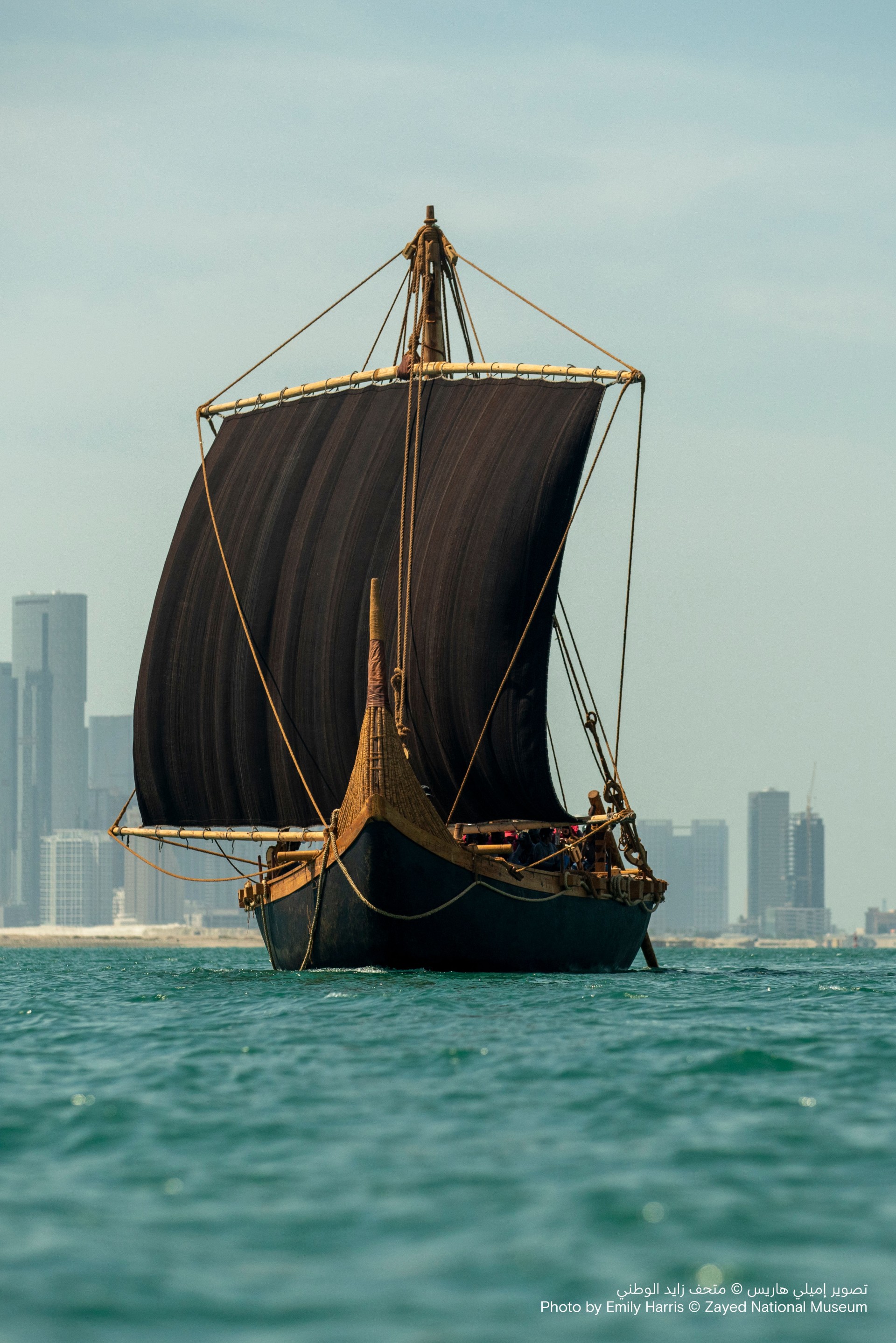A team of experimental archaeologists has set sail in a replica of a Bronze Age boat, built using instructions, materials, and techniques from 4,000 years ago. During two days of sea trials, the 18-meter-long (60-foot) vessel traveled 50 nautical miles (92.6 kilometers; 57.5 miles) in the Arabian Gulf, reaching speeds of 5.6 knots (10.4 kilometers per hour; 6.5 miles per hour).
Known as a Magan Boat, the ship was built by researchers from NYU Abu Dhabi and Zayed University using methods outlined on a clay tablet from 2100 BCE. Taking its name from the Magan civilization – which once encompassed what is now Oman and the United Arab Emirates – the boat is representative of the kind of vessel that once enabled the region to trade with Mesopotamia and South Asia.
As per the ancient instructions, the ship’s outer hull was made from 15 tons of locally sourced reeds, tied into bundles using date palm fiber rope and lashed to a wooden frame. In accordance with ancient waterproofing methods, the reeds were then coated with bitumen.
Overall it was easier to sail than expected.
Dr Robert Parthesius, NYU Abu Dhabi
“A variety of evidence was relied upon for the design and construction of the ship,” said Robert Parthesius, Program Head for Heritage and Museum Studies at NYU Abu Dhabi, in an email to IFLScience. “This included bitumen remains of ancient watercraft, textual sources, boat models (usually found in funerary contexts), and maritime iconography.”

Magan Boats played a key role in transnational trade during the Bronze Age.
Image credit: Emily Harris, Zayed National Museum
The ship was constructed by a team of Indian shipwrights who specialize in sewn boats and were therefore familiar with many of the techniques used by ancient Magan Boat makers. Working closely with the researchers, these traditional craftspeople created a seaworthy vessel capable of carrying up to 36 tons, based on ancient illustrations.
“The vast majority of the vessel was built by hand using traditional tools such as chisels, adzes and wooden mallets,” Parthesius told IFLScience. Because pulleys and other modern rigging system didn’t exist back in the Bronze Age, a crew of more than 20 people was required to help lift the sail, which was made of goat hair.
Captained by Emirati sailors, the ship was then put through its paces off the coast of Abu Dhabi. “Although we did not test the vessel’s performance in high winds, and therefore do not have complete data for top speeds of the vessel, the vessel was able to reach speeds of over five knots in less than 15 knots of wind, which exceeded our initial predictions,” explained Parthesius.
“Overall it was easier to sail than expected.”
Source Link: 4,000-Year-Old Bronze Age Boat Replica Taken For 93-Kilometer Sailing Trip